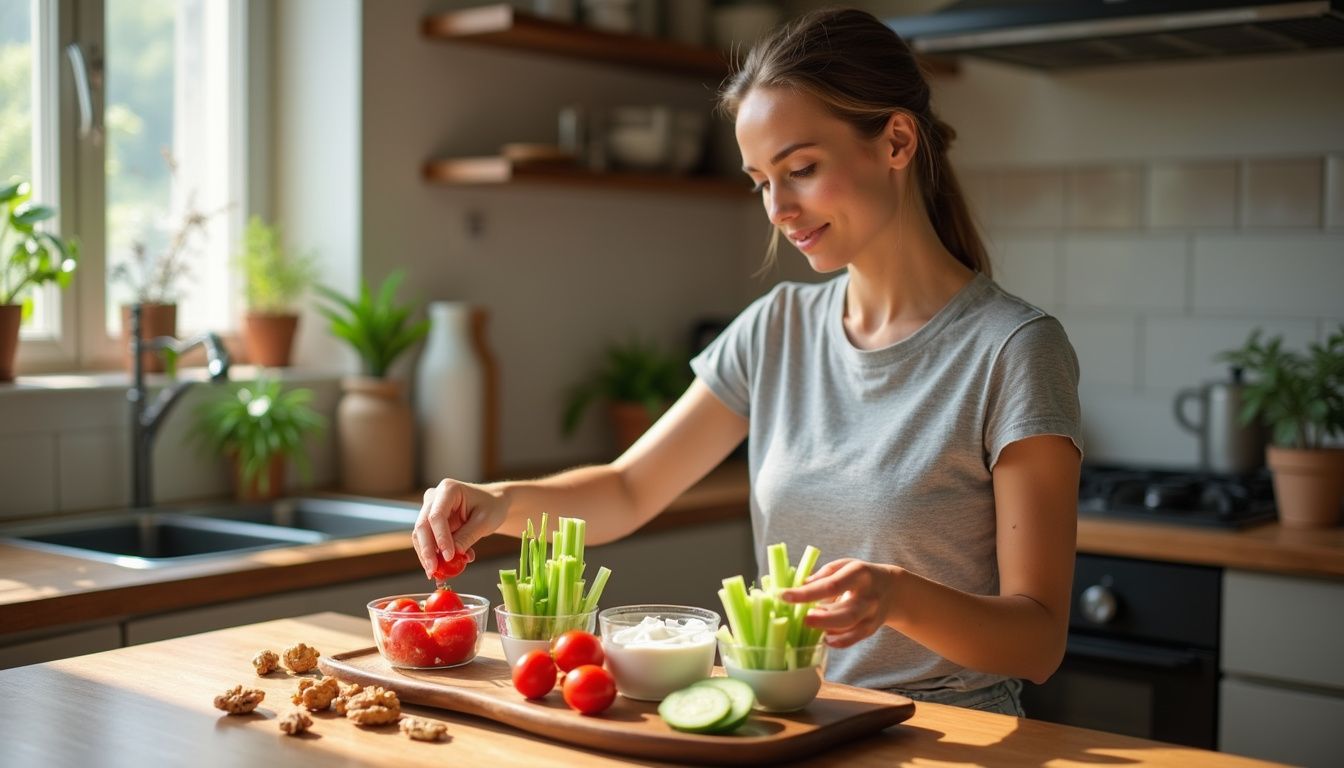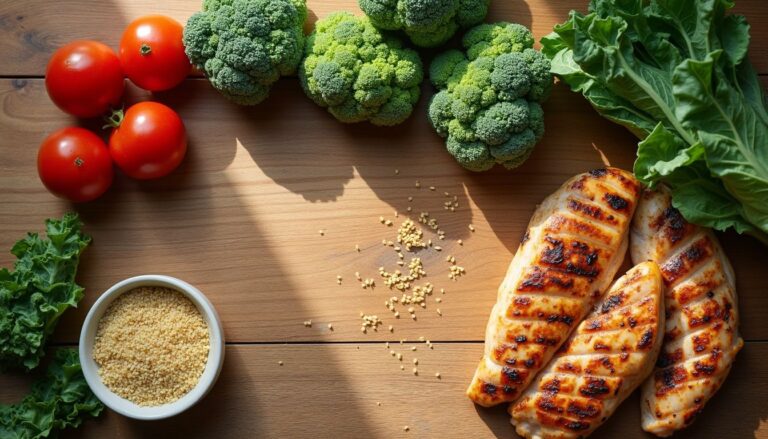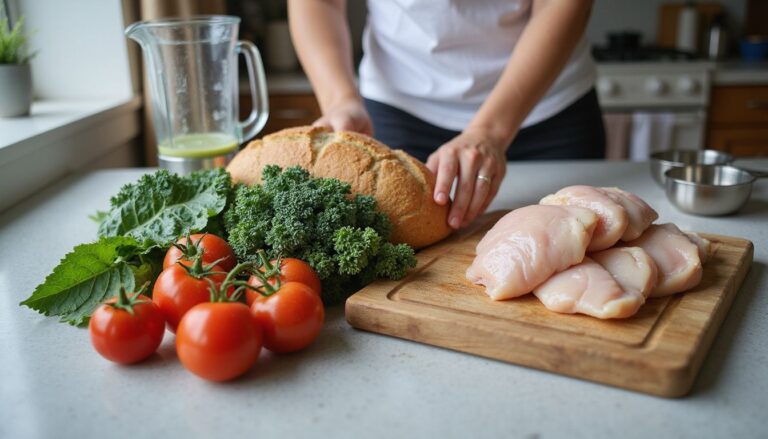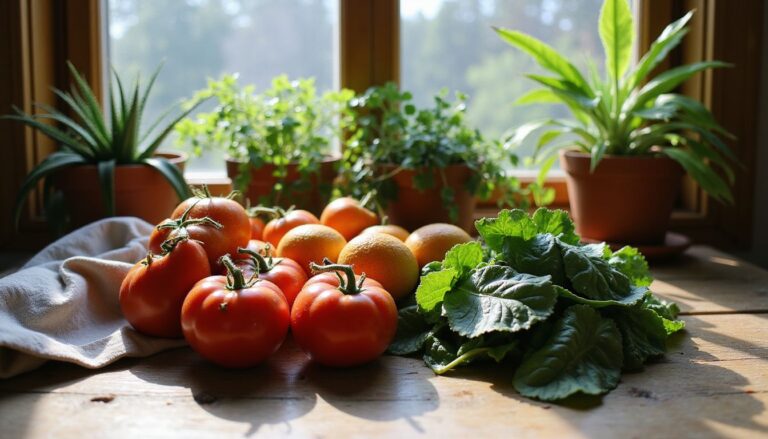Top 5 Weight Loss Snacks: Healthy Options For Your 100-Calorie Fix
Our Nutrition Assistant AI Suite will transform your body. You will lose fat, get toned, and build muscle. Gain confidence and optimal health.
Choosing healthy snacks for weight loss can feel tricky, especially when cravings hit. The right 100-calorie bites help steady hunger, control portions, and protect your progress. You will find five easy ideas here, plus simple tips to keep snacks satisfying and low in calories.
Each option focuses on protein or fiber. Those two nutrients help you stay full between meals, which makes weight management easier day to day.
Key Takeaways
- Snacks near 100 calories, such as air-popped popcorn or Greek yogurt, help manage hunger with protein and fiber.
- Nutrient-dense choices like roasted chickpeas, carrot sticks with hummus, and apple with peanut butter support steady energy and fewer cravings.
- Plant-forward snacks high in fiber can close common nutrient gaps and reduce added sugar intake, as noted by the CDC.
- Portion control matters. Pre-measure nuts or nut butter to prevent overeating and keep calories in check.
- Prepping whole-food snacks ahead lines up with USDA 2020 to 2025 guidance for practical calorie control.
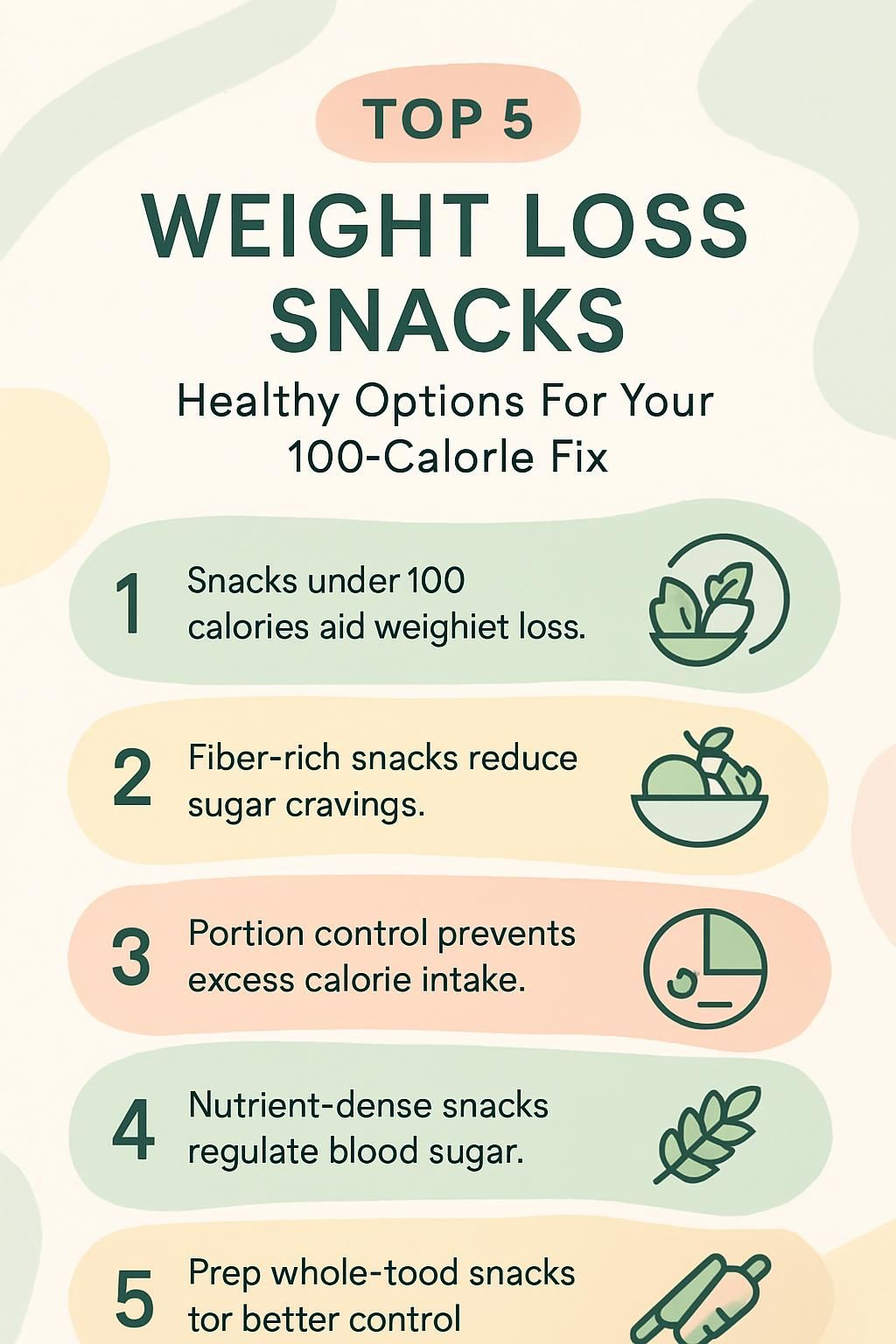
Why Snacks Are Important for Weight Loss

Smart snacking protects you from the late-afternoon nosh that derails a plan. A small, balanced bite can curb hunger and prevent oversized meals later.
What role do snacks play in a balanced diet?
Snacks fill nutrition gaps between meals and help spread energy through your day. When you choose protein or fiber rich items, like Greek yogurt, cottage cheese, or roasted chickpeas, you reduce spikes and dips in appetite.
Eating every 3 to 4 hours can support stable blood sugar and a steady metabolism. Produce and whole grains add vitamins and minerals without a large calorie hit. Whole-grain crackers with cheese, fruit with nuts, or vegetables with hummus are simple examples.
Picking whole-food snacks also helps you avoid added sugar and unhealthy fats found in many packaged items. That shift supports weight management and better diet quality.
Why choose low-calorie, nutrient-dense snacks?
Low-calorie, nutrient-dense snacks deliver more value per bite. Air-popped popcorn, roasted chickpeas, and Greek yogurt give you volume, protein, or fiber for few calories.
These nutrients keep you feeling full and help regulate blood sugar. They also address common shortfalls like calcium, potassium, and vitamin C, which the CDC highlights in national reports. An apple with a measured portion of nut butter makes staying on track easier when cravings spark.
Research suggests fiber forward, plant-based snacks can improve fullness on fewer calories. That means you can feel satisfied and still keep your calorie budget intact.
Smart snacking is not about eating less; it is about eating right.
How to Pick Healthy Weight Loss Snacks
Think protein and fiber first. Then set a target portion that fits your plan, usually around 100 calories.
Which snacks are high in protein and fiber?
Protein and fiber slow digestion, which helps you feel full longer. Keep a few of these ready so you always have a quick snack.
- Cottage cheese, about 1 cup, provides roughly 25 grams of protein. Add pineapple or melon for natural sweetness and vitamin C.
- Greek yogurt, plain and nonfat, has about 10 to 20 grams of protein per single-serve cup. Top with berries for fiber and antioxidants.
- Roasted chickpeas deliver plant protein and fiber. One cup cooked has around 14 to 15 grams of protein and plenty of crunch.
- Edamame, which are soybeans, packs about 18 grams of protein and 8 grams of fiber per cup. Sprinkle a pinch of sea salt or chili flakes.
- Hard-boiled eggs give 6 grams of protein each. They are portable and keep you satisfied between meals.
- Mixed nuts such as almonds, walnuts, or pistachios offer healthy fats, protein, and some fiber. Measure portions since calories add up fast.
- Sliced apple with peanut butter balances natural sugar with fat and protein. You get fiber from the apple and roughly 4 grams of protein per tablespoon of peanut butter.
- Carrot sticks with hummus combine fiber packed veggies with chickpea-based protein.
For a real-world approach, keep two go-to options at work and two at home. That simple rule cuts last minute choices that can cost you extra calories.
How to avoid added sugars and unhealthy fats?
Short ingredient lists are your friend. Aim for whole foods or lightly processed items with minimal additives.
- Choose peanut butter made only from peanuts and salt. Skip added sugar and hydrogenated oils.
- Use plain Greek yogurt without artificial sweeteners. Add berries for natural sweetness.
- Mix your own trail blend with raw nuts and seeds. Leave out candy pieces and sweetened fruit.
- Bake kale chips at home with a light coat of olive oil and spices such as garlic powder or smoked paprika.
- Pick hummus with simple ingredients and low sodium to keep fat quality heart friendly.
- For jerky, look for low-sodium, no added sugar versions. Avoid heavily processed sticks high in saturated fat.
- Read labels on crackers, granola bars, and protein drinks to spot added sugar and trans fats.
- Slice fresh vegetables like carrots, bell peppers, cherry tomatoes, and zucchini. Pair with hummus instead of creamy sauces.
- Measure nut butter to 1 tablespoon. You will control calories while still getting healthy fats.
- Satisfy a sweet tooth with fruit and a pinch of cinnamon instead of dessert bars.
What are the best portion control and calorie limits?
Set a default limit near 100 calories for a snack. Pre-portion at home so decisions are easy later.
Three cups of air-popped popcorn usually come in under 100 calories. One ounce of mixed nuts is a full serving, yet very calorie dense. If you need to keep snacks at 100 calories, portion nuts closer to a half ounce.
Crackers go down fast. Count 8 to 10 whole-grain crackers and pair with about one third cup of low-fat cottage cheese for around 10 grams of protein. Use measuring cups or a small food scale to build consistent habits.
These limits keep snacks satisfying without turning into a second meal.
Air-Popped Popcorn
Air-popped popcorn is a whole grain that brings big volume for few calories. It scratches the itch for something crunchy without breaking your calorie budget.
Why is air-popped popcorn good for weight loss?
Popcorn is rich in fiber, which boosts fullness and slows digestion. A 3-cup serving of air-popped popcorn lands under 100 calories, so you can enjoy a full bowl and still stay on plan.
Since it is a whole grain, popcorn offers more nutrition than many chips or refined crackers. Choosing it can lower total daily calories while supporting blood sugar control.
What are the nutritional benefits and ideal serving size?
Three cups of air-popped popcorn is a smart serving, about 90 to 100 calories. This portion feels generous and keeps fat intake low.
Popcorn supplies fiber for appetite control and contains polyphenols, which are plant antioxidants that help protect cells. It provides complex carbs for steady energy.
Season with nutritional yeast for a cheesy, savory flavor. Skip butter and heavy salt to keep sodium and calories in line. Use air-popped kernels instead of pre-packaged microwave bags to avoid extra oils and additives.
Greek Yogurt with Berries
Greek yogurt with berries gives you a creamy base plus natural sweetness. It is a quick way to boost protein and satisfy a sweet craving.
How does Greek yogurt with berries provide protein and natural sweetness?
Most single-serve Greek yogurts deliver 10 to 20 grams of protein. Protein supports muscle, metabolism, and appetite control. It also helps prevent the snack attacks that hit late in the day.
Berries add fiber and color with very few calories. For instance, one cup of raspberries offers about 8 grams of fiber along with antioxidants that support health.
Mix the two for a balanced snack that tastes like dessert but fuels like a mini meal.
How can I prepare this snack quickly?
You can build this snack in under two minutes. Keep the pieces on hand and it becomes a weekday habit.
- Grab a single-serve cup of plain Greek yogurt for automatic portion control.
- Add 1 cup of fresh or frozen berries such as blueberries, strawberries, or raspberries.
- If you want extra sweetness, use 1 teaspoon honey or a sprinkle of cinnamon.
- Stir until combined.
- Pair with a few whole-grain crackers if you need more fiber and crunch.
- Stock several cups in the fridge so a healthy choice is always ready.
- Choose low-fat options to keep calories near 100 to 120 per serving while getting protein and calcium.
- Rotate berries to vary antioxidants and flavor.
- Prep two or three servings ahead for busy days.
- Skip flavored yogurts that add sugar. Use plain yogurt and whole fruit instead.
Roasted Chickpeas
Roasted chickpeas are crisp, satisfying, and simple to spice. They offer plant-based protein and fiber in a portable form.
Why are roasted chickpeas high in fiber and plant protein?
Chickpeas are legumes. One cup cooked provides around 12 grams of fiber and about 15 grams of protein. That mix supports fullness, steady digestion, and healthy muscles.
Roasting keeps most nutrients intact, including iron and magnesium. Those minerals support energy and muscle function.
A small portion, about one third cup, lands near 100 calories and still gives crunch and flavor. It is a strong alternative to chips when you want a salty bite.
How do you prepare and flavor roasted chickpeas?
Roasted chickpeas come together with basic steps and pantry spices. You can tailor the flavor in minutes.
- Rinse and thoroughly dry 1 can, 15 ounces, of chickpeas.
- Toss with 1 tablespoon olive oil for crisp texture.
- Spread on a parchment-lined sheet pan for even baking.
- Bake at 400°F for 20 to 30 minutes, shaking the pan once, until golden and crunchy.
- Season while hot with sea salt, paprika, cumin, or nutritional yeast.
- For heat, add chili powder or a garlic and onion spice blend.
- A 1/3 cup portion is roughly 100 calories, with more fiber and protein than many packaged snacks.
- Store in an airtight container for up to three days at room temperature.
- Sprinkle on salads or soups for extra crunch without added sugar.
Sliced Apple with Peanut Butter
Apple slices with peanut butter hit sweet and savory in one snack. You get fiber from the fruit and satisfying fat from the spread.
How does this snack balance natural sugars with healthy fats?
Apples deliver natural sugar plus fiber, which slows digestion. Peanut butter adds protein and healthy fats that help steady blood sugar levels. This combo reduces the rise and crash pattern common with sugary snacks.
Choose peanut butter made from just peanuts and salt. That keeps added sugar and oils off your plate.
This low-effort snack also brings key vitamins and minerals. It is simple, tasty, and easy to fit into a busy day.
What are portion control tips for peanut butter?
Peanut butter is calorie dense. A little goes a long way.
Measure 1 tablespoon for about 90 to 100 calories. Spread it thinly over apple slices so the snack stays near your target. Measuring with a spoon beats guessing, which often adds more calories than you think.
Scan labels for extra oils or sweeteners. Sticking to simple ingredients helps you meet your goals while enjoying foods you love.
Carrot Sticks with Hummus
This classic pair is crunchy, creamy, and very filling for the calories. It is easy to pack and kid friendly too.
What makes carrot sticks with hummus a crunchy, satisfying snack?
Carrots offer a crisp bite, while hummus brings smooth texture and savory flavor. Fiber in the vegetables and protein in chickpeas help you feel full between meals.
Hummus delivers creaminess without heavy saturated fat. You can swap in celery or cucumber now and then, but carrots add natural sweetness that pairs well with the dip.
Many dietitians favor this snack because it encourages portion control and adds essential nutrients in a small calorie package.
What are the nutritional benefits of carrots and hummus?
Carrots provide beta-carotene, which your body turns into vitamin A for healthy eyes and skin. Hummus, made from chickpeas and olive oil, gives plant protein and heart friendly fat.
Two tablespoons of hummus contain about 2 to 3 grams of protein and around 70 calories. Pairing it with carrots boosts fiber and helps your body absorb more vitamin A from the vegetables.
It is a flexible option that fits a rotation with other favorites like Greek yogurt with berries or air-popped popcorn.
Other Healthy Snack Ideas
Variety keeps snacking interesting. Mix in a few more choices so you do not feel stuck eating the same thing every day.
Are hard-boiled eggs good for weight loss snacks?
Yes. A hard-boiled egg has about 70 calories and 6 grams of high-quality protein. Protein increases fullness and helps control snacking on sweets later.
Egg yolks also provide vitamin D and choline, which support metabolism and brain health. Many people enjoy an egg after a workout because it supports recovery.
If you have high cholesterol or heart disease, discuss egg frequency with a health professional.
What mixed nuts are best (almonds, walnuts, pistachios)?
Each nut offers a useful benefit. Rotate them for a balanced mix of nutrients.
- Almonds, 1 ounce, about 164 calories, deliver vitamin E, magnesium, fiber, and protein.
- Walnuts provide omega-3 fats that support heart health. They also supply protein, fiber, and minerals like copper.
- Pistachios are slightly lower in calories per ounce. Eating them in the shell slows your pace and helps portion control.
- A standard serving is 1 ounce, about 1/4 cup. For a 100-calorie snack, use closer to a half ounce.
- Choose unsalted or lightly salted to keep sodium down.
- Want added crunch without more calories from nuts? Mix in a spoonful of roasted chickpeas or soy nuts.
How does dark chocolate with almonds fit into a healthy snack?
Dark chocolate paired with almonds can be a satisfying treat that still respects your goals. Cocoa contains polyphenols, which are plant compounds linked with heart benefits. Almonds bring fiber and healthy fats that help tame hunger.
Keep portions small because this combo is energy dense. Try one small square of dark chocolate, about 5 grams, with 6 almonds. That usually lands near 120 to 150 calories and still feels special.
This mix can calm sugar cravings and prevent a larger splurge later in the day.
Benefits of 100-Calorie Snacks for Weight Loss
Keeping snacks near 100 calories builds a simple boundary. It reduces decision fatigue and helps you stay consistent through a busy week.
How do 100-calorie snacks keep you full between meals?
Protein and fiber are the key drivers. Three cups of air-popped popcorn provide about 3 to 4 grams of fiber. A serving of edamame supplies more than 8 grams of protein plus fiber. These nutrients slow digestion, curb hunger, and smooth out energy.
Roasted chickpeas or veggies with hummus bring both texture and staying power without blowing your calorie budget. Cheese or eggs also reduce later cravings by boosting protein earlier in the day.
Oatmeal can work in a small portion too. A half cup cooked with cinnamon feels warm and steady, which helps you walk past the cookie jar.
How do these snacks help regulate blood sugar levels?
Balanced snacks slow the rise of glucose. Greek yogurt with berries, roasted chickpeas, and carrots with hummus pair protein and fiber. That combo supports even energy rather than a quick spike and crash.
Healthy fats from nuts or avocado also blunt sharp rises. A study in the Journal of Nutrition and Metabolism reported steadier glucose readings in people who chose regular high-fiber snacks over two weeks.
Stable blood sugar helps you focus and makes it easier to choose sensible portions at the next meal.
| Snack, 100-calorie portion | Protein | Fiber |
|---|---|---|
| Air-popped popcorn, about 3 cups | 3 g | 3.5 g |
| Plain Greek yogurt with a few berries | 10 to 12 g | 1 to 2 g |
| Roasted chickpeas, about 1/3 cup | 5 to 6 g | 4 to 5 g |
| Apple slices with 1/2 tbsp peanut butter | 2 to 3 g | 2 to 3 g |
| Carrots with about 1.5 tbsp hummus | 2 g | 3 g |
Values are estimates. Brands and recipes vary.
Tips for Smart Snacking
Simple systems beat willpower. A little planning helps you skip ultra-processed snacks that hijack calories and appetite.
How can I avoid processed and energy-dense foods?
Read labels before you buy. Choose items with short ingredient lists and without added sugar or unhealthy fats. Reach for whole foods like apples, carrots, or edamame instead of chips or cookies high in refined grains and sodium.
Prepare easy snacks at home using basic ingredients. Toast a slice of whole-grain bread and top it with sliced tomato. Stir plain Greek yogurt and cinnamon for a quick, high-protein bowl.
Packing sliced vegetables with hummus in small containers keeps you away from vending machines during hectic days. These homemade picks make staying near 100 calories much easier and align with USDA 2020 to 2025 dietary guidance.
What are easy ways to prepare snacks in advance?
Planning ahead turns healthy snacking into an automatic habit. Set aside 20 minutes once or twice a week.
Hard-boil several eggs and store them for grab-and-go protein. Portion mixed nuts into small bags with about a half ounce each for a 100-calorie target.
Pre-cut carrots, celery, and bell peppers. Keep them in clear containers at eye level in the fridge. Roast a batch of chickpeas or bake kale chips on Sunday and store them in airtight containers.
Use single-serve cups for Greek yogurt, cottage cheese, or hummus. With ready portions, you do less math and make fewer impulsive choices.
Conclusion
Healthy snacks for weight loss work best when they are simple, measured, and rich in protein or fiber. Air-popped popcorn, Greek yogurt with berries, roasted chickpeas, apple with peanut butter, and carrots with hummus are reliable 100-calorie options that keep you full between meals.
Prep a few choices ahead, measure portions, and read labels. These small steps help you stick with 100 calories per snack and make steady progress toward your goals.
This information is educational. If you have medical conditions such as diabetes, heart disease, kidney issues, or food allergies, talk with a registered dietitian or your healthcare provider for personalized guidance. Sources: CDC, USDA Dietary Guidelines 2020 to 2025.
FAQs
1. What makes toast a good choice for a weight loss snack?
Toast is low in calories and easy to prepare. Whole grain toast provides fiber, which helps you feel full longer. When paired with toppings like cheese, it can offer protein and calcium as well.
2. How does cheese support healthy snacking for weight loss?
Cheese provides protein and calcium, both of which are important for muscle health and bone strength. Protein also increases satiety, helping reduce hunger between meals.
3. Are there specific types of bread that work best for 100-calorie snacks?
Whole grain or whole wheat bread is the best option because it contains more fiber than white bread. Fiber slows digestion; this keeps you satisfied after eating your snack.
4. Can combining toast with cheese fit into a 100-calorie limit?
Yes, using thin slices of whole grain toast topped with a small portion of reduced-fat cheese can keep your snack under 100 calories while providing nutrients such as protein and calcium.
Summary: Toast made from whole grains offers fiber that supports fullness during weight management efforts; pairing it with cheese adds valuable protein and calcium without exceeding calorie goals when portions are controlled. These choices align well with evidence-based nutrition guidelines for effective snacking strategies focused on weight control[1][2].
References:
[1] Harvard T.H. Chan School of Public Health – The Nutrition Source: Bread
[2] U.S. Department of Agriculture – FoodData Central

